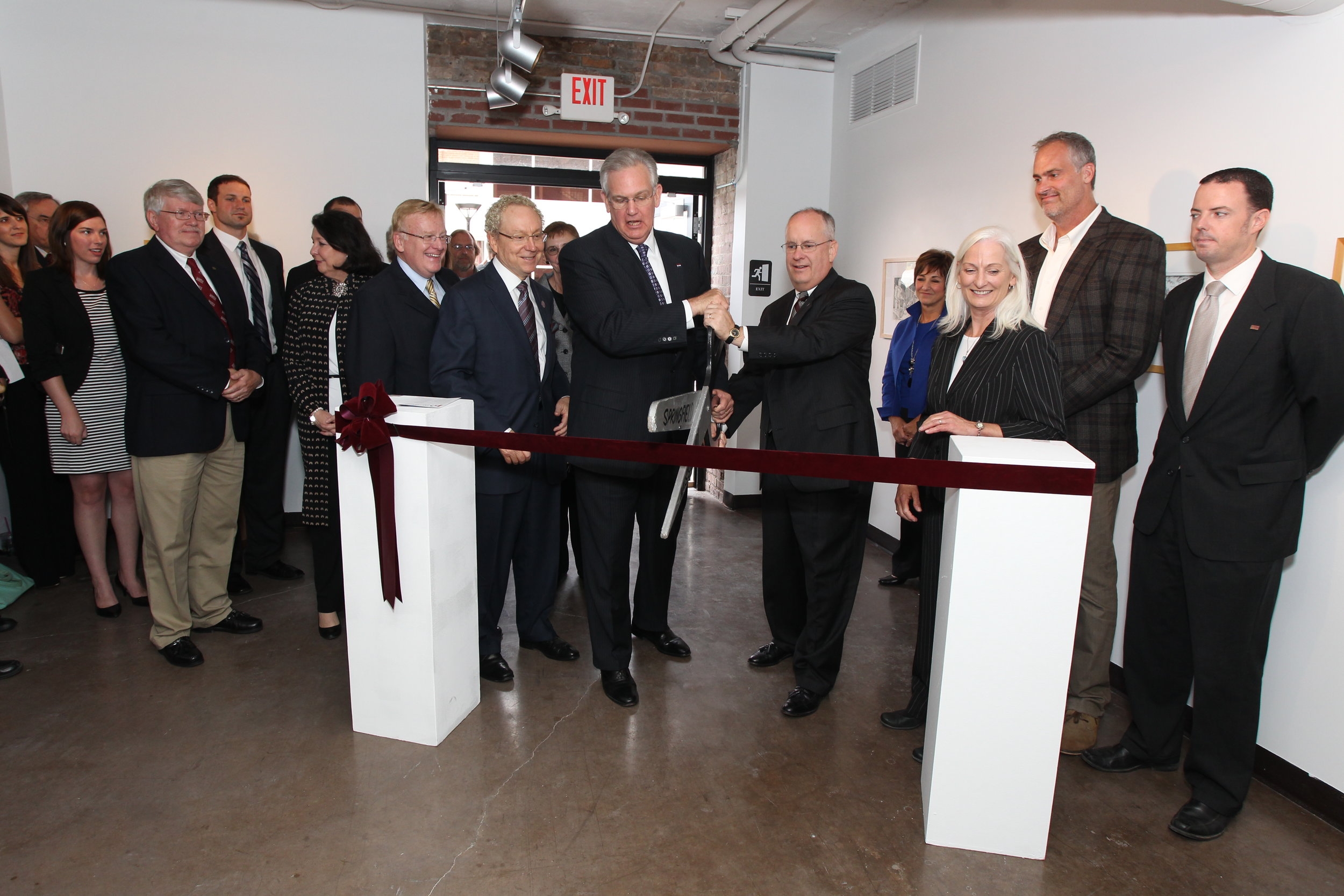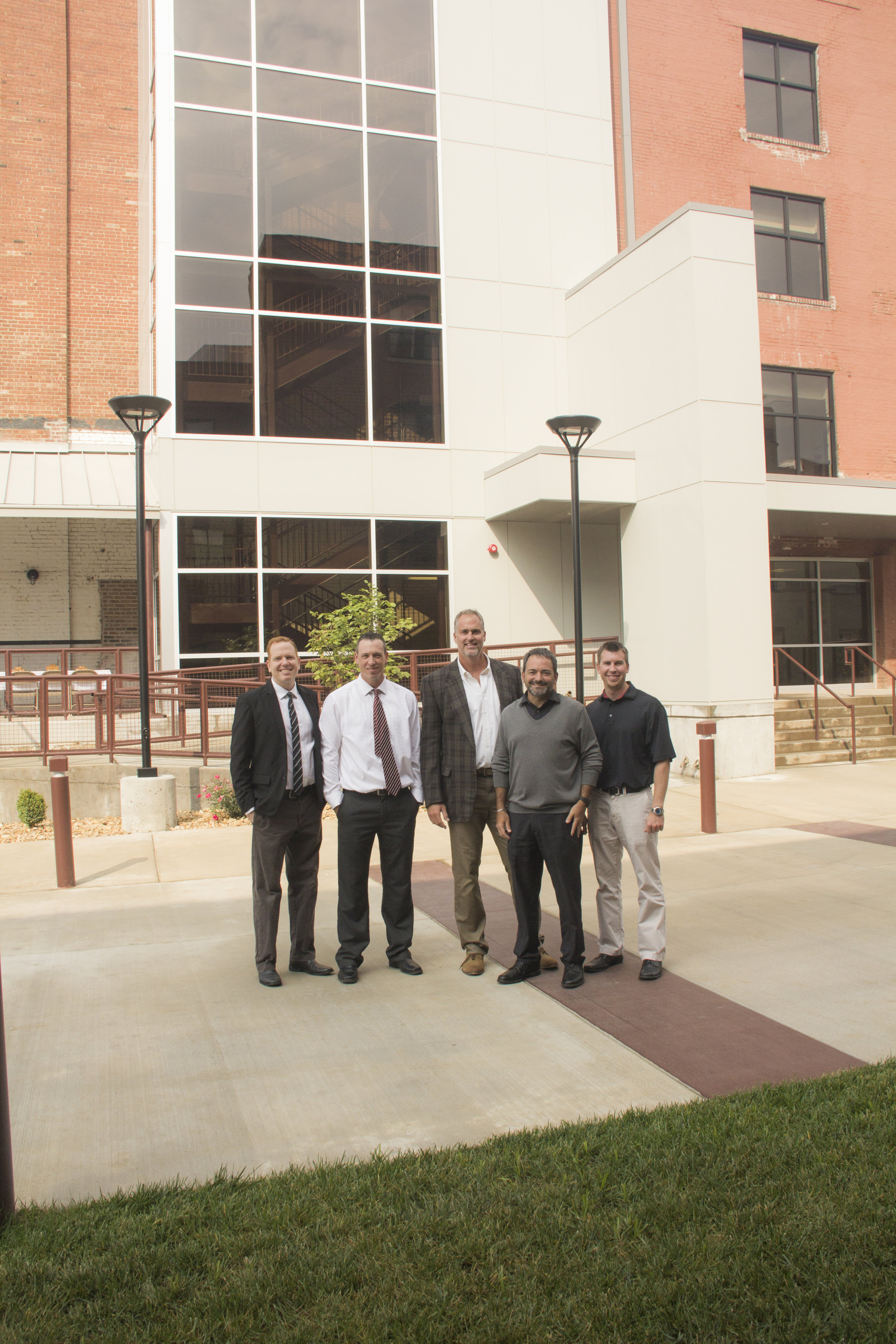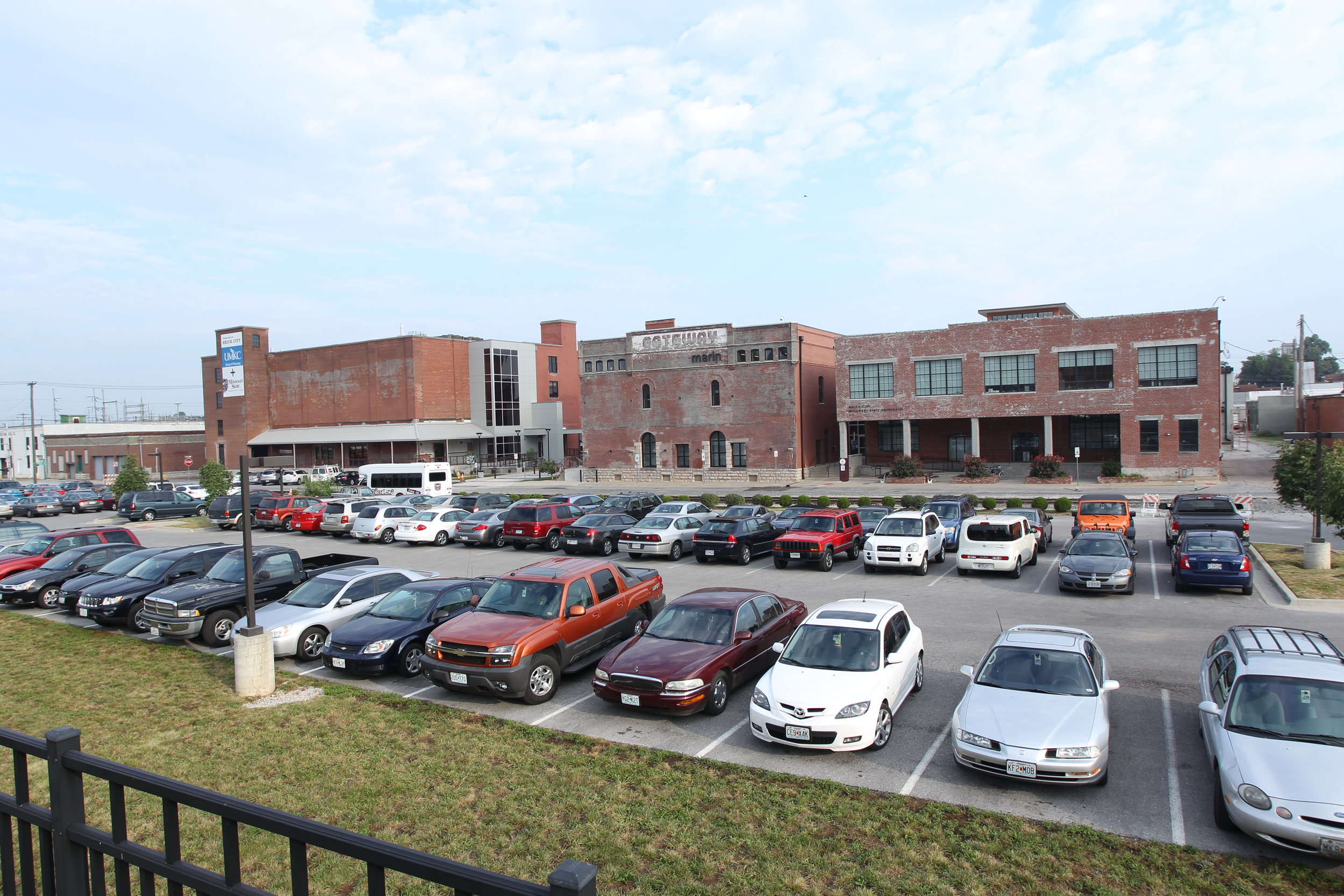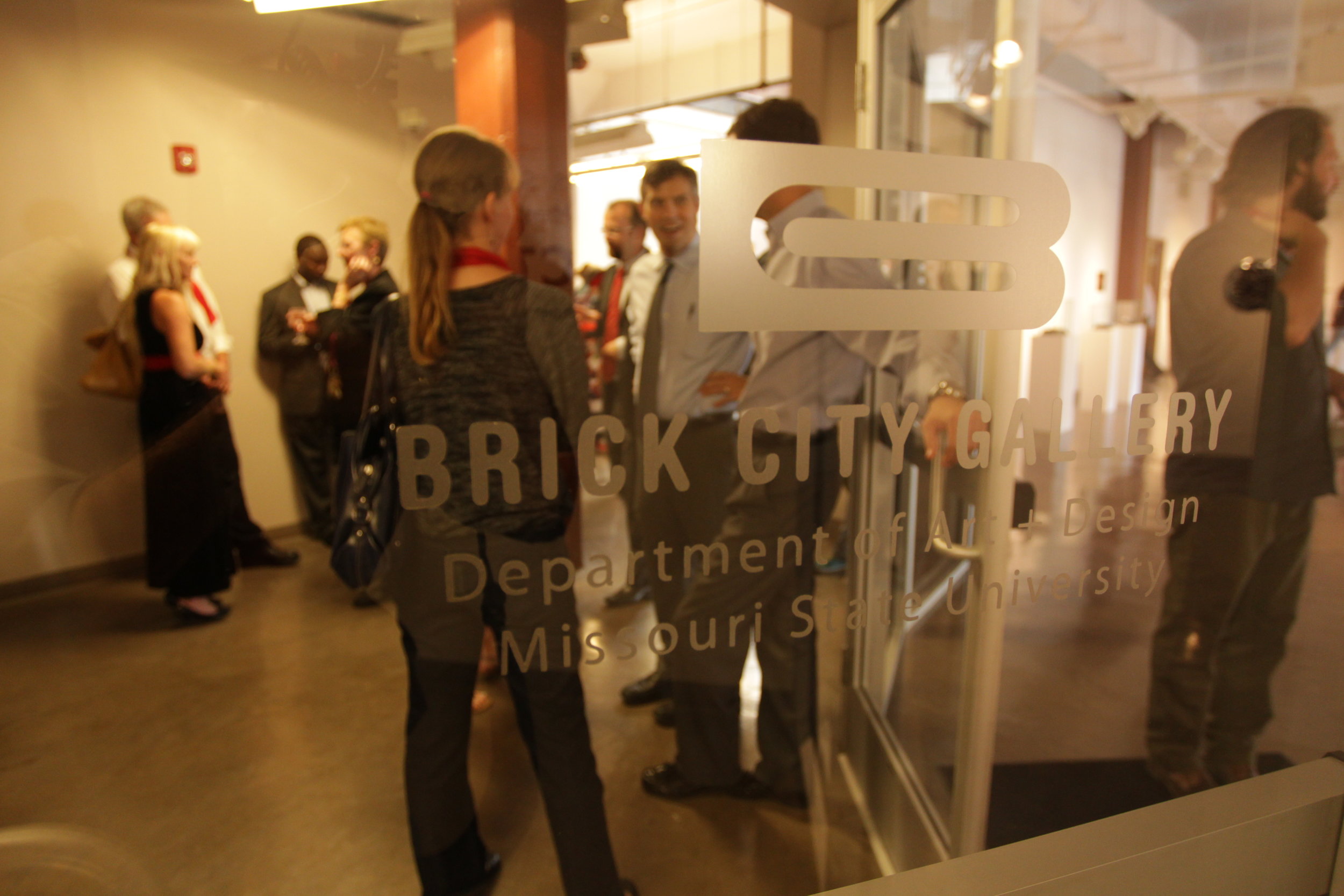Zach Smith, Reporter
6/10/2016 11:06 AM
Although he’s been up since well before dawn, when Matt E. Miller arrives in his office to begin his day, he’s ready to get to work.
Dressed casually in jeans and a black dress shirt, the developer says he likes to ease into his day with journaling, reading (right now it’s actor David Duchovny’s new novel) and walking his dogs (a Newfoundland and a “lazy” sheep dog). But on Tuesdays and Thursdays – the “office” days – when he enters Miller Commerce’s headquarters in Wilhoit Plaza, he’s all business.
“It looks like an intervention, doesn’t it?” Matt jokes as we join the office staff for a team huddle.
Despite his levity, there is at least some truth in that it does feel like a gathering of family or friends. Going around the circle in no particular order, each staff member updates Matt on what he or she will be working on this week – no less than six projects are in various stages of progress – and what they plan to do over the Memorial Day weekend.
Matt, who sometimes bikes to work and hits up the downtown YMCA gym most mornings, says he is trying to get some family and friends together for a trip to Dogwood Canyon. Later that morning, I’ll get an inkling of just how active Matt really is.
As the huddle wraps and a conference call with a lawyer representing Miller Commerce on a project concludes, Matt and Vice President of New Development Steve Stinnett head across town, a three-man SBJ news team in tow. With two cameras on him for the duration of our walk to Bates & Associates, he draws more than a few prolonged glances, always met with a greeting and a smile.
Although the Birch Pointe meeting at Bates with architect Phil Young is short – Reliance Health Care Inc. Director of Development Wes Holland won’t be making his flight in due to increasingly inclement weather – it does offer a small modicum of amusement. Matt has to cease his introductions of SBJ and Bates staff in order to take a call from yet a fourth SBJ staffer – reporter Brian Brown – to talk about the senior living development for the Daily Update e-newsletter.
For me, it’s an interesting meta moment in journalism, being in the middle of my own story and someone else’s – particularly since I usually hear Brian’s half of the interviews while I’m in the office but have never before been privy to the other side of the conversation.
On the walk back, Matt mentions how he got started in the business at age 19, buying a house on Brower Street for $11,000, and flipping it for $27,000. He estimates with a laugh that he maybe made a grand total of $300 in the end, but it was a start. Since starting Miller Commerce in 2002, he’s seen downtown grow at an incredible rate and attract more people into center city, spurring further development.
“You have this influx of young people, but we still have this element of the young professional,” Matt says. “You’ve got BKD and Marlin, as just a couple of good-size firms, that try to retain this talent. Quality housing options are a big part of that.”
The generally unpleasant weather blanketing Springfield the week of my Day in the Life boiled to a froth that Tuesday, erupting in brief but torrential rain and hail around noon. Waiting at the site of the gated senior living community Tera Vera for investor Sam M. Coryell to go over some siding color samples, Matt muses he was going to ask SBJ photographer Wes Hamilton and I along on a mountain biking jag through Two Rivers Mountain Bike Park that afternoon, but the rapidly darkening sky bears ill portent for that.
As subtly as possible, I breathe a sigh that’s half disappointment and half relief. Disappointment, as this scenario easily would have made for a great addition to the article, and relief that I won’t have to embarrass myself in front of my source or colleague by either a) falling hopelessly behind someone who mountain bikes three or four days a week in good weather or b) caroming off of a rock somewhere in the woods.
When Sam shows up, he admits he had his own trepidations about taking two wheels off-road for the first time since childhood, but Matt gave him the needed encouragement.
“He said, ‘Look, the only thing that ruins mountain biking is when someone gets hurt, so have fun,’” Sam recounts. “’If you want to walk it, don’t worry, that’s fine.’ So I did. There was a lot of walking.”
“Walk today, ride tomorrow,” Matt adds with a grin.
Showing off some samples of colored exterior siding, he jokes with project manager Colleen Hargis about forgetting to bring a rendering mockup because he and Steve changed the day’s schedule between Bates, Miller Commerce and Tera Vera, picking her up at the last second before the jaunt south down Jefferson Avenue.
“Matt likes to give people crap,” she retorts good-naturedly.
“You can quote that,” Sam says to me. “That needs to be in there somewhere.”
While the glance at color samples is a quick meeting, it’s also crucial. While Sam is acting only as an investor and owner in Tera Vera, Matt likes to make the partners aware of any changes or updates in the plan and he says Sam’s knowledge is an asset to the project.
“His experiences are different than mine; there’s real value to that,” Matt adds. “If he sees something and says, ‘Let’s not do that because I experienced this,’ that’s a huge win and I want to leverage that as much as I can.”
In the course of the day, I came to a swift (and perhaps to others, obvious) conclusion that it takes a certain type of mind to think like a developer – and I certainly don’t have it. Take the Tera Vera property: Living only a few blocks away from the rapidly progressing development, I drove by the area almost every day for close to two years. All I saw was an empty patch of ground behind a residential neighborhood. Matt saw an opportunity.
Senior living isn’t the only bright spot on Matt’s future horizon, as becomes evident during his afternoon at the office.
During a brief call with Care to Learn Executive Director Linda Ramey-Greiwe about the organization’s upcoming Panther Run event, Matt – who also sits on the nonprofit’s board – considers how he can help drum up student participants and volunteers. With roughly 200-300 bedrooms downtown and another 320 in student housing, he thinks can help create some buzz.
Later, when Matt meets with Affiniti Management Services Inc. President Lonnie Funk and Vice President of Operations Brad Danzak, the student-housing buzz brings good news. Leasing is 25 percent up over last year at the same time with referrals and cross-marketing efforts driving the increase. Some rooms seem to market themselves, and Brad notes three-bedroom units aren’t open more than a week.
Lonnie doesn’t think the market has felt the full impact from the expanding Bear Village or towering Aspen complexes, but if there’s any concern about competition, Matt and the Affiniti crew don’t show it.
“This is the skirmish before the battle that’s yet to come,” Lonnie says of the competition in the market. “We’re going to win this one – location gives us a competitive edge – but we’re looking forward to next fall.”
Although well-defined niche markets for loft-lookers, students and seniors are Matt’s specialties. A specific project bubbles to the surface constantly during my day with Matt: So El District Lofts.
At different points throughout the day, Lonnie, Steve and Matt refer to the building’s hybrid nature, what he later describes as being not quite downtown loft living and not quite student housing. In the geographic middle ground between the heart of the Queen City and Missouri State University, he’s more eager than anyone for the Aug. 1 opening date in order to see what the building turns into once the most important element is added: people.
While the properties need tenants – residential or commercial – to be profitable ventures, there’s another side to Matt’s outlook in his role as developer. Miller Commerce, along with its partners and the architects and contractors who bring the buildings to life, have to figure out what features other than four walls and a solid roof make people want to live there. That extends not only to the amenities of the rooms or properties, but also the surrounding areas.
“What speaks to me as a resident – what would I want for tomorrow? How do we incorporate what’s going on in the world?” Matt asks. “We move all these pieces, spend millions, look for great designs and put in years of hard work, but at the end of the day it gets down to the people who are living there and keeping them happy.”
Reporter’s Notebook
Below are some pictures taken by SBJ photographer Wes Hamilton that are representative of My Day in the Life with Matt. Many of my own pictures turned out a bit blurry, besides the photo at the top of this article.
Matt checks in with staff during a morning huddle in the entryway to Miller Commerce.
Steve, left, and Matt wrap up a conference call prior to the Birch Pointe meeting at Bates & Associates.
Steve and Matt review renderings presented by Phil of Bates & Associates for the planned $17 million Birch Pointe project.
Here’s one of three bedrooms in the Tera Vera model home. According to Steve, the homes were more than 90 percent complete at the time of Matt’s Day in the Life.
Matt’s travels adorn the walls of the Miller Commerce conference room.
Former Banta Foods President and CEO Chuck Banta catches up with Matt prior to an investor meeting.



































